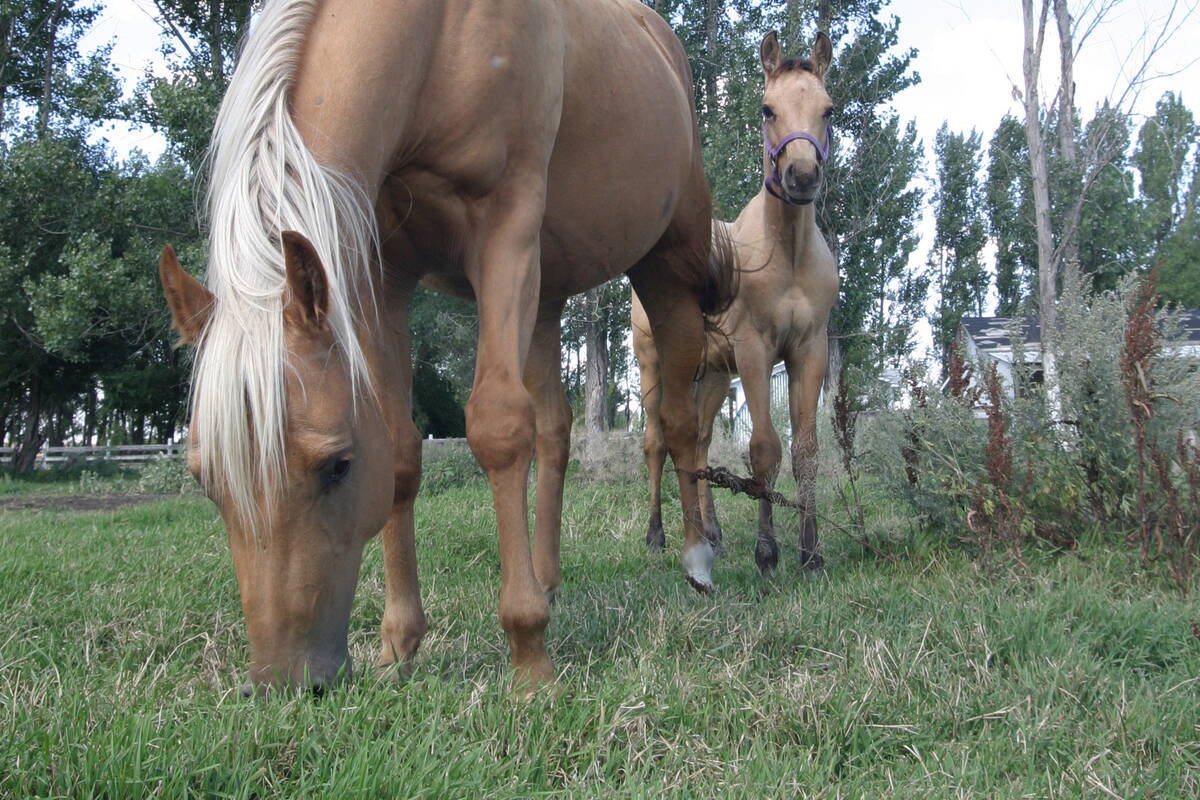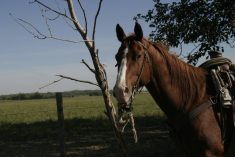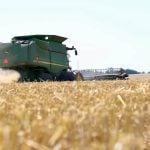Hay is one of those products that does not come with a label, feed tag or guaranteed analysis, yet what is in “it” or even what is not in “it” are valuable questions when meeting your horse’s dietary needs. Since forage comprises the largest volume, and at times, all of your horse’s diet, hay assessment is a worthwhile exercise.
Seemingly simple parameters such a how the hay “looks,” “feels” and “smells” can be surprisingly effective at assessing its quality. Hay with the best combination of desirable physical characteristics will generally be of good nutritional value. Although numbers generated by forage test stations are valuable and at times necessary, they play a role of secondary importance to the physical qualities of hay.
Read Also

Ignoring growth plates sabotages young horse development
Young horse training plans and workloads must match their skeletal development. Failing to plan around growth plates can create lifelong physical problems.
Understanding the physical nature of hay enables horse owners to match ideal hay with horse type and demands. Typically the nutritional needs of individual horses will be better suited towards certain forage species.
Timothy grass hays may fall short of meeting the nutrient requirements of high-production life stages, but is an excellent hay for horses that require bulk in their diet. Timothy, alfalfa, orchard grass, fescue, brome and clover all have easily recognizable physical characteristics and distinct nutrient profiles. Weeds and noxious plants will also have readily distinguishable characteristics. Their identification in a hay crop is equally important.
Stage of maturity
The stage of maturity when the plant is harvested will be of next importance to the horse. As a plant matures towards seed formation, its growth pattern changes from leaf production to stem formation. Hays cut shortly after emergence of seed heads, are “soft” to the touch and leafy. They are relatively high in protein content, nutrient dense and of good palatability. Early-maturing hay may be ideal for growing horses and lactating mares, yet may not be the best choice for horses requiring less nutrients. These horses are better matched to mid- to late-maturing hays. Metabolically challenged horses, sedentary horses or horses in light work thrive on coarse mature hays.
The colour of hay reveals its plant type, stage of harvest, and its growing and storage conditions. The natural green colour is preferred as such indicates absence of rain damage, weathering, moulds and heat damage. Hay rained on or weathered will turn pale. A little rain soon after cutting does little harm to hays and may even be favourable to some horses as up to 30 per cent of a hay’s sugars can be washed away with the rain.
Ideally hay is baled when its moisture content is 15 to 17 per cent. Hay put up with a higher moisture content is at risk for heating and provides ideal growing conditions for mould. Although mould can show itself as patches of darker discolouration, it is not always visible.
Follow your nose
A sharp, musty, and/or metallic odour will alert one to mould. Learn to recognize the ‘right’ weight range for a bale of hay. Hay baled too dry will be very light and have leaf shatter and/or crumble when touched or disturbed. Its nutritional value will be limited.
These bales will often be very dusty. When a single bale is ‘very’ heavy to lift it may have been baled too moist and is now heating, breeding mould, and caramelizing/degrading the sugars and proteins. Once again your sense of smell will alarm you. Avoid dusty and mouldy hays as both cause damage to the horse’s respiratory system.
Horse owners are encouraged to have their hay further analyzed by a laboratory when the quality of the hay is of concern, rations require balancing or supplementation or when a nutritional problem is perceived.
Fortunately most hay dealers will eagerly provide a laboratory analysis for their hay. If not, many local agriculture extension services or feed stores offer analysis services.
One might also consider sending a sample to Equi-Analytical Laboratories (HYPERLINK “http://www.horsechannel.com/redirect.aspx?location=http per cent3a per cent2f per cent2fwww.equi-analytical.com” www.equi-analytical.com).
Sampling requirements, numbers provided and interpretative support offered to horse owners varies significantly between laboratories. Equine nutritionists and veterinarians are additional resources available to interpret results generated by forage-testing stations. The services of specialty labs may also be necessary when the levels of trace mineral and vitamins are in question.
Remember to include the health and appearance of the horse(s) as feedback when assessing forage quality. Ultimately this is the true determinant of forage quality.















